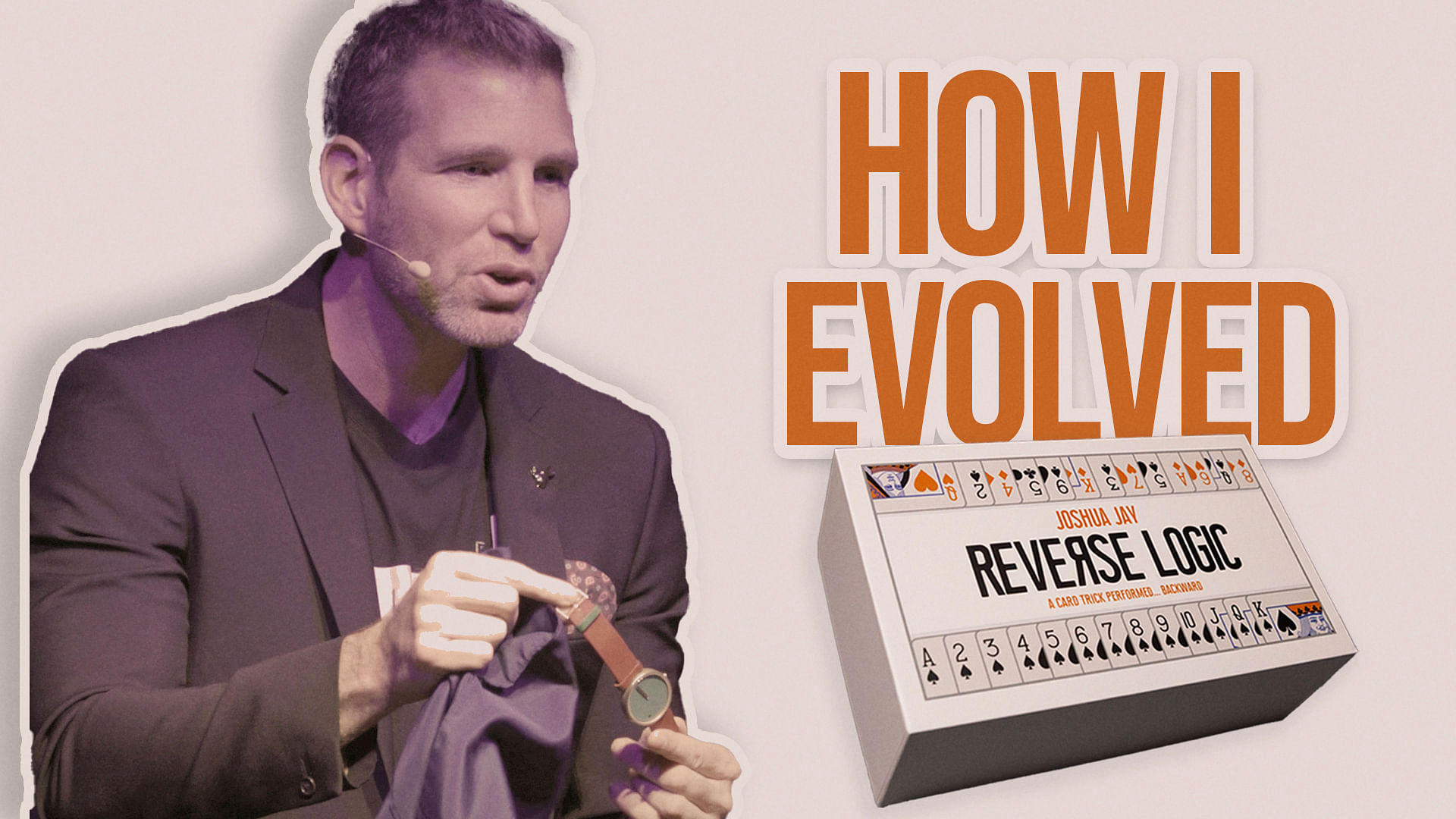How I Evolved Reverse Logic
By Joshua Jay - Tuesday, September 24, 2024

I developed “Reverse Logic” in 2010, for a show I did called Unreal. I’ve been doing the trick continuously for 14+ years, and I’ve included it in nearly all of parlor performances in that time. I thought it might be interesting to talk about how I developed it, and why it remains a trusted element in my repertoire.
How it Started.
It starts, as all things do, with Pit Hartling. I saw Pit do a terrific, tidy card routine on "The Movie", a DVD released by Pit’s boy-band, The Flicking Fingers. In that routine, he offered to do a card trick backwards. He would find a card (which he removed and placed face down on the table) and then, he said, he would have one chosen. A card was peaked from the pack and then immediately shown gone. The face-down card on the table—the one he already found—was shown to be the selection. The trick was short, tight, and had a smart construction. I wanted to do that trick onstage, for lots of people.
Solving Problems
Immediately there were problems. The trick proved to be too linear for a large group. By this I mean that the construction, while novel, is also predictable. People can guess where the trick is going far ahead of the performer being able to reveal it. And while short, punchy card tricks are often the goal in close-up magic, tricks that end in ninety seconds or so make for rather dull tricks onstage. This is barely enough time to establish a premise.
From there I started to add meat onto the bones; I added an interlude where my watch would disappear and reappear back on my wrist. I also added a phase where the spectator could shuffle the pack and it would end up back in new deck order. I involved a spectator onstage and devised a deck switch woven into the choreography of the trick. The trick became longer and unpredictable; now it had surprises.
How I Use It
For me “Reverse Logic” is a pace-setter in my show. I have used it to open (and just as often as a second piece), and it has many of the qualities I look for in an opener: it has five moments of magic in quick succession, each one more impressive than the last. It has a premise (of doing a trick backward) that immediately establishes what I’m doing as different, and, I hope, more cerebral, than the average performance of magic.
Most importantly, I know the trick cold and it’s foolproof. There’s no risk of failure whatsoever. This allows me to focus on tuning in to the vibe of the audience and the room and the conditions, and try to find my flow. Whether or not you choose to invest in “Reverse Logic,” I do hope you’ll note the value in finding a piece that has some of these qualities that you can add to your set near or at the top, to find your own rhythm.
Why I'm Finally Releasing Reverse Logic
So, why have we decided to market “Reverse Logic” now?
“Reverse Logic” isn’t at all the kind of trick we see come to market very often: it isn’t particularly commercial. You need to do a deck switch onstage, and remember quite a bit of choreography. It isn’t hard, but it also isn’t automatic. The presentation matters, and it takes some performing chops to pull off. All of these things, on paper, make this trick fairly undesirable as a commercial enterprise. So, again, why release it?
I’m releasing this trick because in the last thirteen years lots and lots of magicians have contacted me to tell me that they’re making up “Reverse Logic.” It’s a huge pain to make this trick yourself: you have to gaff a deck, find just the right props, and make several small, finicky gimmicks. I know that professionals seeking quality, tested material would appreciate having access to a precision-made “Reverse Logic.” I’m also proud of how the trick has evolved; I like sharing my work with magicians. I hope you enjoy it.
Get "Reverse Logic"
Back to blog homepage
Similar posts on the blog:

